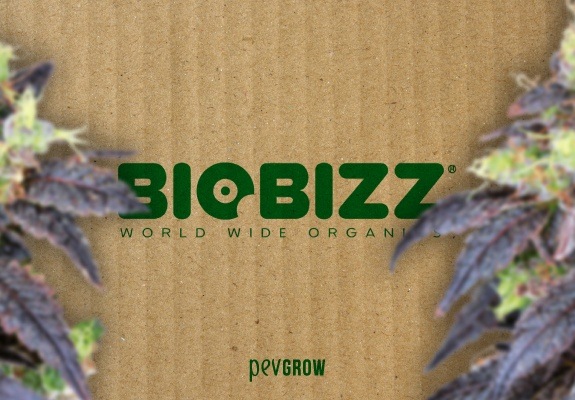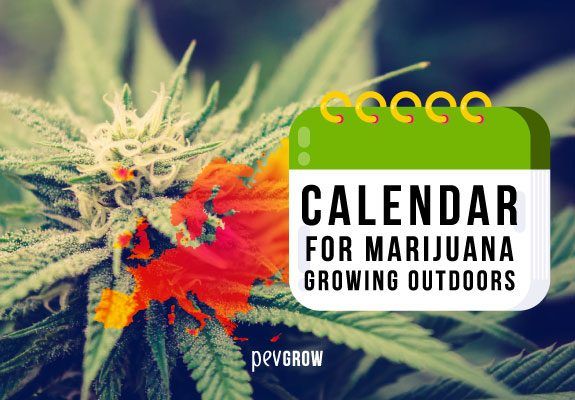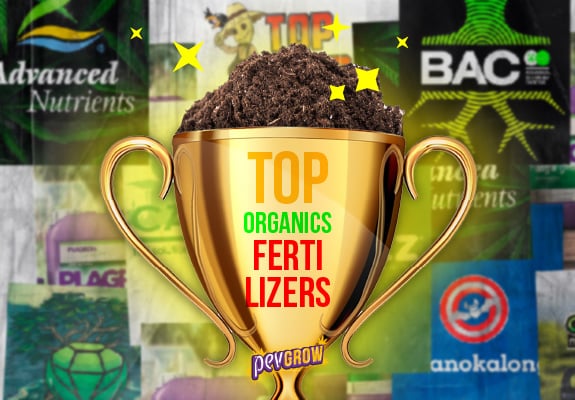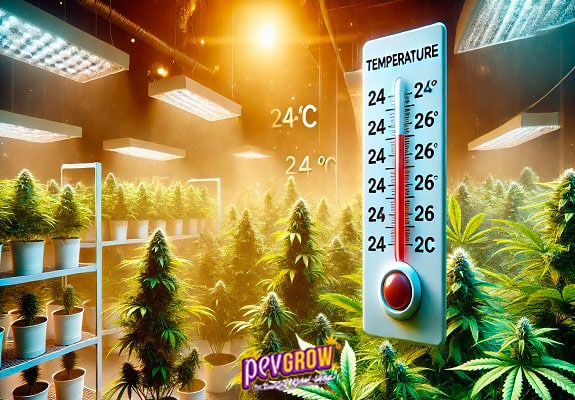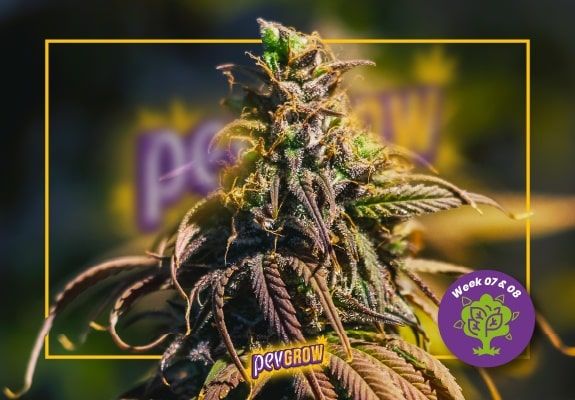

12-08-2022 09:00:16 - Updated: 12 August, 2022
We continue with the daily cultivation monitoring, and now we reach weeks 7 and 8 of the flowering phase of cannabis plants, which for many plants is the intermediate phase between fattening and the maturation of the buds. Many varieties have an 8-week flowering cycle, so they will reach the end of the crop during this time, but many others will need a few more weeks to fully mature.
During the seventh and eighth week of marijuana flowering, the buds finish forming, increase their weight and density, most of the pistils wither, and many of the trichomes change color, going from transparent to white or from white to reddish or amber All these changes are symptoms that announce that the harvest of the plants is approaching, and it is important to know how to act to achieve the best quality in our buds. However, as I always remind you, each genetics can have a different flowering time, and even within the same variety, faster phenotypes can appear and others that need an extra week of flowering.
–Vegetative growth phase of cannabis, everything you need to know
–Week 1 and 2 of the flowering of marijuana plants
–Weeks 3 and 4 of cannabis flowering
–Weeks 5 and 6 of cannabis flowering
📲 Bud maturation phase
During the maturation phase, the buds do not gain as much weight as in the fattening phase, and although they can continue to generate new flowers, the biggest changes have to do with the production of essential oils. These essential oils are made up of cannabinoids, terpenes, flavonoids, etc. so the smell increases greatly during weeks 7 and 8 of flowering.
In this final phase of the crop, the plants continue to consume a lot of phosphorus and especially potassium, which is the element they need in the greatest proportion to set the buds well, because in these weeks they gain a lot of weight, density, and hardness. But you must always keep in mind when to stop adding fertilizers to irrigation and root washing, so as not to spoil the aroma and flavor of the harvest.
⚠️ Tips and tricks to accelerate the maturation of cannabis
- Photoperiod: A decrease in the hours of light accelerates the maturation of marijuana plants, because by extending the night period, the plants understand that autumn is approaching.
- Temperature: Lowering the temperature a few degrees also speeds up ripening because the plants perceive that summer is ending, therefore they tend to finish a little earlier.
- Products: There are some commercial additives that serve to accelerate the maturation of the buds, such as Ripen from GHE or Cannaboost Accelerator from the Canna brand.
🧐 How to wash the roots of marijuana plants
Root washing consists of watering with clean water and little by little but with many liters, approximately 3 liters of water for each liter of substrate. It can be done in many ways, but the most common is surely taking the plants to a bathtub, shower tray or some other place that has a drain to evacuate the drained water.
It is advisable to do it little by little so that the substrate does not compact too much, and care must be taken not to wet the buds, because once they are formed, it could lead to the appearance of botrytis or other fungi. Some people wash the roots with distilled or osmosis water, in this case it is not necessary because the harvest is near and from now on it is important for the plants to consume the nutrient reserves of the leaves. Nor is it necessary to adjust the PH, but if the roots were washed in the middle of the crop, it would be advisable, as well as doing it with soft water.
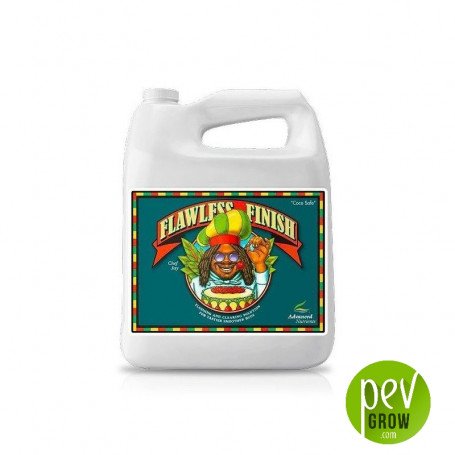
🔥 Products for washing roots and improving the flavor of marijuana
There are a number of commercial products that help clean the roots, keep the substrate clean, or even enhance the flavor of the buds. In the previous article we saw the importance of enzymes to eliminate salts accumulated in the substrate, and their application during root washing is interesting to optimize the leaching caused by water drag.
Doing the root wash with Flawless Finish from Advanced Nutrients is very interesting because this product based on magnesium and sulfur helps eliminate all organic matter and leaves the substrate very clean. Grotek’s Final Flush also works very well in this sense, and there are also different flavors, but if you don’t want to mix different brands, you have to know that you can apply the enzymes of your favorite brand. Among the commercial additives to improve the flavor of the harvest, we are left with Flavor from Atami, Bud Candy from Advanced Nutrients, or Top Candy from Top Crop.
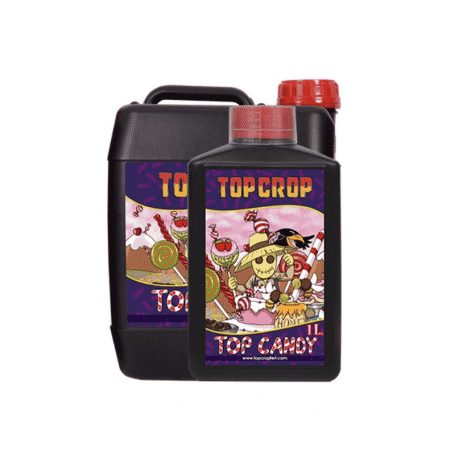
⭐ When to harvest marijuana?
One of the most widespread doubts in cultivation is how to know when marijuana should be harvested, and it is a complicated issue because it depends on the genetics of the plants, their state of maturation, and above all the personal tastes of the consumer regarding the type of effect, since the more mature it is cut, the more narcotic the effect will be.
When a marijuana plant is ready to harvest, most of its pistils have changed from white to brown or reddish, but most importantly, they cannot be seen with the naked eye, and you will need a magnifying glass or microscope to see the changes. The ideal is to check the state of maturation of the trichomes, and for that I invite you to read this article on our blog where we explain what they are and how trichomes mature.
⛳ How to harvest marijuana plants?
This is the best part of growing, and although there are different ways to do it, it is about cutting the plants and drying them. There are people who cut through the lower part of the trunk and hang the plants upside down with the help of a rope, others remove the largest leaves and hang the plants, others cut all the leaves and hang the whole plants, and there are even people who they chop the plants to separate the branches that they later introduce into hanging or table dryers.
If you remove all the leaves, the marijuana dries faster but the buds are exposed, if you don’t remove any leaves the buds will be more protected but they will need more time to dry. If the plants are hung, the buds are better preserved, because when they are placed in dryers, a part of the branch is crushed a little by its own weight. From our point of view, it is best to remove the largest leaves before harvesting, and once the buds are dry, the rest is trimmed, saving all the leaves that contain resin to make recipes or extractions.
✨ Marijuana harvest outdoors
Harvesting marijuana outdoors can be done exactly the same as indoors, but when it is grown outdoors the weather conditions must also be taken into account to advance or delay the cutting of the plants. Imagine that you had calculated to harvest next week, but you see on TV that they announce rains for the whole week… What would you do? The most interesting thing in this case would be to advance the harvest a few days to prevent the buds from getting wet. In the case of seeing symptoms of a plague during the maturation of the plants, the ideal would be to also bring forward the harvest to minimize the damage.
🚀 Weeks 7 and 8 of indoor cannabis flowering step by step
This article is the continuation of a step-by-step daily cultivation follow-up, and if you have not seen the previous entries, I advise you to see them, but if you are following it, you will already know that we are left at day 42 of the flowering phase, so that today we start with day 43 of this cycle.
I take this opportunity to remind you once again that each variety has its flowering time, and this follow-up is calculated for genetics with 8 weeks of flowering, and I also want you to know that it is advisable to follow the indications of the cultivation table of the fertilizer brand that you are using, but always knowing that you have to adapt them to the needs of the plants, since not all of them eat the same.
- Day 43: The seventh week of flowering begins and right now it is a real pleasure to visit the garden every day. The faster varieties will stop fattening the buds from now on, but that does not mean that they no longer improve their weight, since now is when they compact the most.
- Day 44: One of the ways to notice that the maturation of the buds has arrived is by observing the appearance of new flowers, since there comes a time when new white pistils barely appear, and the color change of the oldest begins to be visible, which become brown, red, or orange as a general rule.
- Day 45: You will have noticed that the buds in the middle and lower parts of the plants are not as large or as advanced as those in the upper parts, it is something totally normal and has to do with the incidence of light, but you have to know because sometimes it’s interesting to cut those parts later.
- Day 46: After 1 month and a half of flowering, the buds of the faster genetics are practically formed, but the varieties with more than 10 weeks of flowering continue to fatten, so we have to adjust the fertilization to the needs of each strain. specific.
- Day 47: If you are growing 60-day-flowering plants with mineral fertilizers, today is a good day to wash the roots, and from this day on we will stop adding fertilizers to the irrigation to force the plants to consume their reserves of leaf nutrients.
- Day 48: In the case of growing varieties with 60 days of flowering with organic fertilizers, you can wash the roots perfectly on day 53 or 54. With the genetics of more than 60 days of flowering we can continue with the normal diet.
- Day 49: What happens if a pest appears at this stage of the crop? It depends on the strain that is grown, because if they are varieties with more than 3 months of flowering, fertilizers could still be applied that have a safety period of less than 1 month, but if they are 60-day plants, it may be of interest to advance the harvest. For the rest of the plants, the best we can do is treat the problem with biological control.
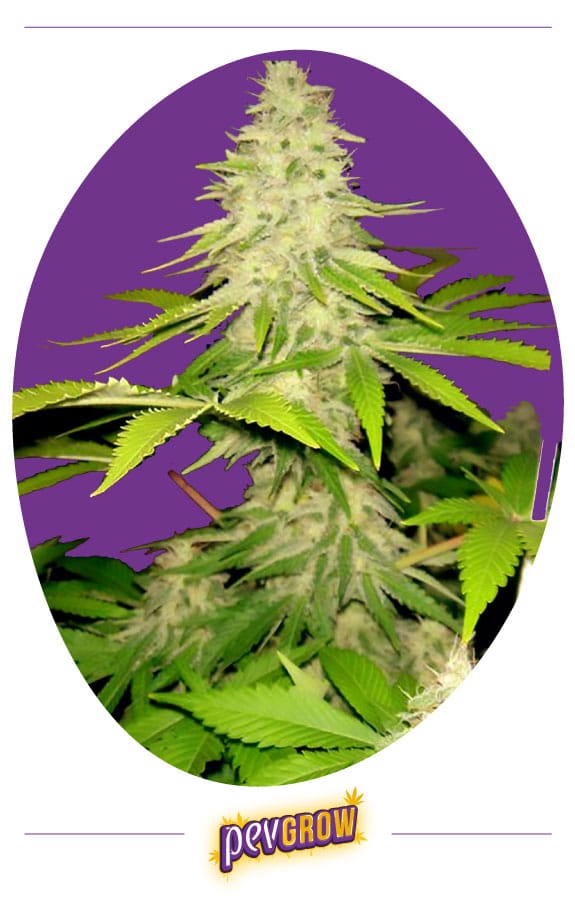
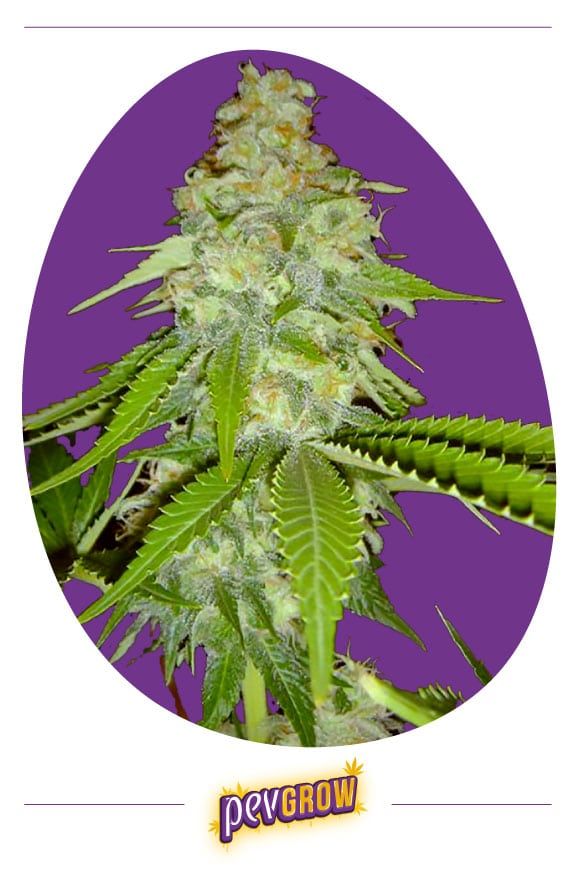
- Day 50: As soon as the roots are washed, you will begin to see deficiencies in the leaves, some yellow evenly but in others you can see spots or discoloration, it is normal and even a good sign, since it means that the washing is having an effect.
- Day 51: You will see that the buds do not increase in size but they will have gained hardness and density, where only pistils were seen, now there is a large concentration of swollen calyxes. Some new white pistils may still appear, because some varieties continue to re-bloom until harvest.
- Day 52: Try to keep the humidity as low as possible and good interior ventilation that moves the plants a little to avoid the appearance of possible pockets of humidity. After root washing, the substrate remains moist much longer than after normal irrigation, and this increases the relative humidity.
- Day 53: The seed bank catalogs indicate objective data regarding flowering times, and as a general rule it is shorter than the real one, so it is possible that your plants need a few more days than they lay. The ideal is to start looking at the state of the trichomes around 1 week before the indicated flowering time, so if your plants are 60 days into flowering, from this day you can start checking the maturation of the resin.
- Day 54: If you did the root wash on day 47 and notice that your plants are still too green, you can do a second wash on this day. Some indica strains and hybrids produce very thick leaves that can hold a lot of food reserves, and in these cases they may need more than 1 wash.
- Day 55: It is advisable to observe the buds daily because from the moment they are formed, they hardly allow internal ventilation, and this can cause the appearance of fungi. For this reason it is important to be careful to remove the possible affected areas and prevent it from spreading to healthy parts
- Day 56: Faster phenos may be ready to harvest, though this depends on your taste in terms of effect. Take a look at this article on our blog in which we talk about trichomes as a natural marker of the state of maturation of the buds, to determine the exact moment of harvest
✅ Conclusion
Today we have seen the tasks related to the seventh and eighth week of flowering of the indoor cultivation of marijuana plants, where most commercial varieties have just fattened their buds and begin the maturation phase. Remember that all these data are indicative, and the ideal is to try to adapt them to the needs of the plants that are being grown. If your plants have a flowering period of more than 8 weeks, don’t worry, as we will soon publish an article on weeks 9 and 10 of flowering, as there are many commercial varieties with these characteristics.
👾 Frequent questions
In what month is marijuana harvested?
In the northern hemisphere, the month of marijuana harvest is October as a general rule, since the vast majority of commercial varieties finish their maturation between the 1st and the 20th of this month. On the other hand, in the southern hemisphere, the month of the outdoor harvest is April, since it coincides with the month of October in the northern hemisphere.
However, it must be clear that in outdoor cultivation, the harvest of photodependent strains begins in September and ends in January in the northern hemisphere, and depending on the genetics of the plants, they will end sooner or later. Autoflowering strains are harvested 65-90 days after seed germination, regardless of date.
How many harvests does a marijuana plant give?
Marijuana is an annual plant, which means that they germinate in spring or summer, and are harvested in autumn or winter. But there is a very interesting technique that allows the same plant to be harvested more than once, or what is the same, that the plant grows again and flourishes after harvesting, revegetation. This method consists of leaving some low-lying buds unharvested, and putting a photoperiod of more than 18 hours of light a day to “trick” the plants and make them grow again. It is interesting to transplant and water with root stimulator and vegetative growth fertilizer to speed up the process. If you want to know more about this technique, I recommend you read this article on our blog where we talk about revegetation.

